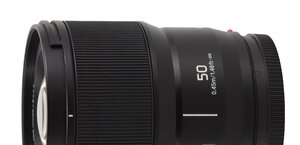Sigma 28 mm f/1.8 EX DG Aspherical Macro
9. Ghosting and flares
Please Support UsIf you enjoy our reviews and articles, and you want us to continue our work please, support our website by donating through PayPal. The funds are going to be used for paying our editorial team, renting servers, and equipping our testing studio; only that way we will be able to continue providing you interesting content for free. |
- - - - - - - - - - - - - - - - - - - - - - - - - - - - - - - - - - - - - - - - - - - - - - - -
The Sigma 1.8/28 works quite well against bright light. On an APS-C/DX sensor it catches a colourful artifact slightly to the left from the image centre when you put the sun in the upper left-hand corner of the frame. The artifact is the biggest at the maximum aperture. On stopping down its intensity is decreasing but some other smaller flares, more or less intense, appear along the line connecting the sun with the original artifact. In fact a very similar performance we noticed on full frame and examples can be seen in the pictures below.
 |
 |
The Sigma, discussed here, hasn’t been tested on a spectrophotometer so we can’t show its transmission graph. It seems, though, that the results wouldn’t be of the highest quality – images got with the Sigma 1.8/28 compared to those taken with another lens of the same parameters and using the same exposition parameters almost always seem to be darker. Weaker transmission is the most probable culprit but it might be also a combination of several factors like specific vignetting or an aperture which is too stopped down.






